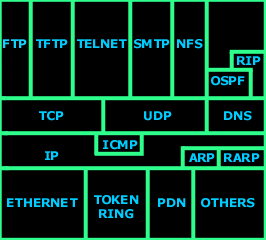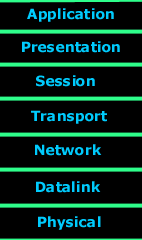Introduction To ProtocolsIntroductionIn the networking and communications area, a protocol is the formal specification that defines the procedures that must be followed when transmitting or receiving data. Protocols define the format, timing, sequence, and error checking used on the network. In plain english, the above means that if you have 2 or more devices e.g computers which want to communicate, then they need a common "Protocol" which is a set of rules that guide the computers on how and when to talk to each other. The way this "defenition" happens in computer land is by the RFC's (Requests For Comments) where the IETF (a group of enginners with no life) make up the new standards and protocols and then the major vendors (IBM, Cisco, Microsoft, Novell) follow these standards and implement them in their products to make more money and try to take over this world ! There are hundreads of protocols out there and it is impossible to list them all here, but instead we have included some of the most popular protocols around so you can read up on them and learn more about them. The table below shows the most popular TCP/IP protocols. The OSI model is there for you to see which layer each of these protocols work at. One thing which you should keep in mind is that as you move from the lower layers (Physical) to the upper layers (Applications), more processing time is needed by the device that's dealing with the protocol. Please note: All routing protocols can be found under the "Networking/Routing" menu option. TCP/IP Protocol Stack ..................The OSI Model
Currently available protocols to read about are :
|
||
| Back | ||
 ...
...
